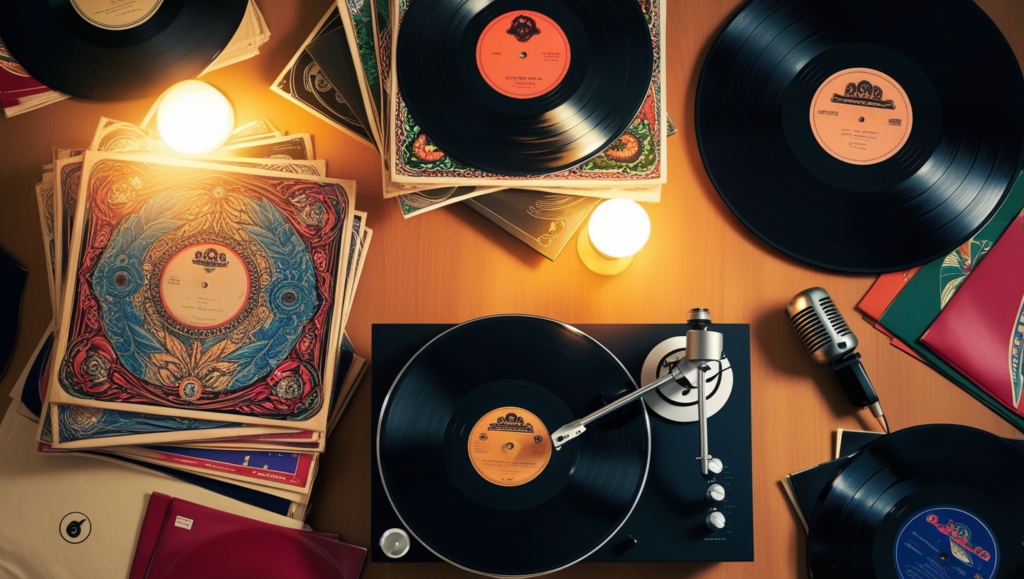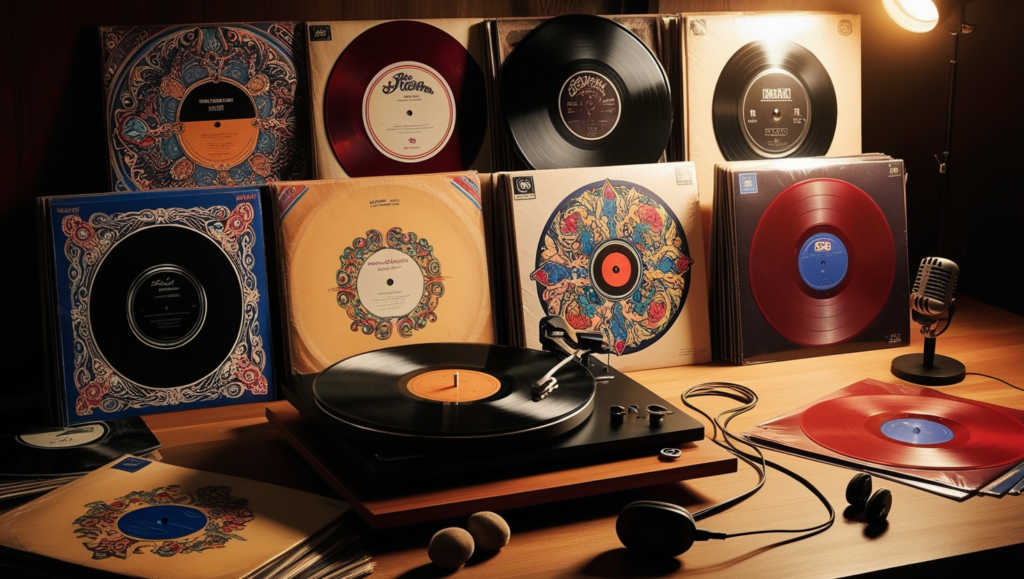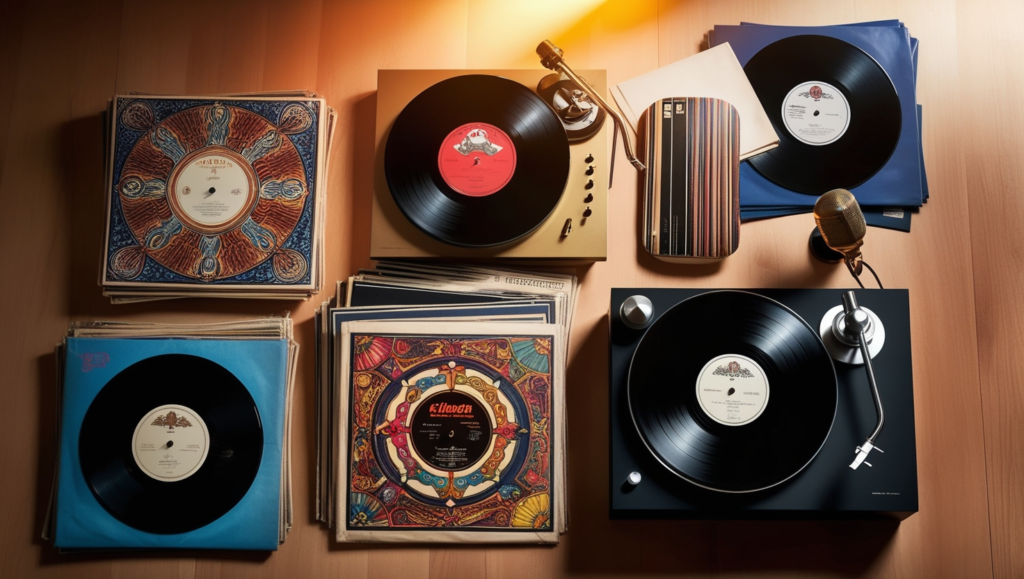Collecting vintage vinyl records is like being a musical detective – and trust me, I’ve learned that the hard way! A few years back, I almost dropped $500 on what I thought was a rare first pressing of a classic jazz album, only to discover it was a well-crafted counterfeit. Talk about a gut punch!
Did you know that the vintage vinyl market is estimated to be worth over $1 billion annually, with some rare records selling for jaw-dropping amounts? I’m talking about vinyl that can fetch tens of thousands of dollars for a single record! But here’s the catch – the more valuable the record, the more likely someone’s trying to create a fake.
When I first started collecting, I was like a kid in a candy store, grabbing every interesting-looking record I could find. Big mistake. Every collector needs to develop a detective’s eye for authentication. It’s not just about protecting your wallet – it’s about preserving musical history and ensuring the authenticity of these incredible sound artifacts.
In this guide, I’ll share the tricks I’ve learned over years of collecting, researching, and sometimes getting burned. We’ll dive deep into the world of vinyl authentication, giving you the tools to spot a genuine treasure from a clever imposter. Get ready to become the Sherlock Holmes of the vinyl world!
Contents
- 1 Understanding the Basics of Vinyl Record Authentication Content
- 2 Visual Inspection Techniques for Vintage Vinyl Content
- 3 Technical Markers of Authentic Vintage Vinyl Content
- 4 Advanced Authentication Methods for Serious Collectors Content
- 5 Red Flags and Common Counterfeiting Techniques Content
- 6 Conclusion
Understanding the Basics of Vinyl Record Authentication Content
Let me tell you, authentication isn’t just some fancy collector’s term – it’s your financial bodyguard in the wild world of vintage vinyl. When I started collecting, I thought a record was a record. Boy, was I wrong!

Counterfeiting in the vinyl world is more sophisticated than you might imagine. These aren’t your grandpa’s bootleg copies – modern fakes can be incredibly convincing. Some counterfeiters use advanced printing techniques and high-quality vinyl that can fool even experienced collectors at first glance.
The stakes are real. A genuine first pressing of a rare album can be worth thousands, while a counterfeit is basically worthless. I’ve seen collectors devastated after spending hundreds or even thousands on what they thought was a rare find, only to discover it was a fake.
Here’s the deal – authentication is about multiple layers of investigation. It’s not just looking at the record and hoping for the best. You need to become a vinyl detective, looking at printing details, manufacturing markers, and understanding the historical context of the record’s production.
Pro tip: Always approach a potential purchase with a healthy dose of skepticism. If a deal seems too good to be true, it probably is. I learned this the hard way after getting burned more times than I’d like to admit!
Visual Inspection Techniques for Vintage Vinyl Content
Visual inspection is like your first line of defense in vinyl authentication. It’s where your detective skills really come into play. I remember spending hours under a bright light, magnifying glass in hand, examining every tiny detail of a potential purchase.
The record label is your first major clue. Authentic vintage records have specific printing characteristics that are hard to replicate. Look for crisp, clean printing – any blurriness or poor quality can be a red flag. Vintage records from different eras had distinct printing techniques, and understanding these can be your secret weapon.
Color and printing consistency are crucial. Original pressings often have specific color palettes and printing qualities that modern reproductions can’t perfectly match. I once caught a fake by noticing the label’s color was just slightly off – a detail most people would miss.
Pay attention to the smallest details:
- Check the font used on the label
- Examine the printing quality and clarity
- Look for any irregular spacing or alignment
- Verify the label’s overall condition matches the record’s supposed age
Pro collector tip: Invest in a good magnifying glass and some bright, natural lighting. I keep a jeweler’s loupe in my record bag – it’s saved me from making costly mistakes more times than I can count!
Technical Markers of Authentic Vintage Vinyl Content
Matrix numbers are like the DNA of vintage vinyl records. These tiny etched codes in the runout groove tell a story that most casual collectors completely miss. I remember the first time a record shop owner showed me how to read these magical little numbers – it was like learning a secret language!

Each matrix number typically reveals crucial information about the record’s pressing. You’re looking for:
- Original manufacturing date
- Specific pressing plant location
- Unique identifier for that particular batch of records
The runout groove is a treasure trove of information. Authentic vintage records often have hand-etched numbers or text that tell a unique story. Some collectors spend years learning to decode these microscopic markings. I’ve spent countless hours comparing matrix numbers across different pressings, and let me tell you – it’s like vintage record archaeology!
Different record labels had unique manufacturing techniques. Columbia Records used different stamping methods compared to RCA or Atlantic. Learning these nuanced differences is like developing a trained ear for music – it takes time, patience, and lots of hands-on experience.
Pro tip: Take photos of matrix numbers and compare them with online databases. Some incredible online communities specialize in helping collectors verify the authenticity of specific pressings. I can’t tell you how many times these forums have saved me from making a costly mistake!
Advanced Authentication Methods for Serious Collectors Content
Alright, let’s talk about the big leagues of vinyl authentication. Professional grading services are like the Supreme Court of the vinyl world. These experts can authenticate a record faster than you can drop a needle on a turntable.
Services like Professional Grading Service (PGS) and Goldmine use incredibly detailed grading scales. They don’t just look at a record – they perform forensic-level examinations. We’re talking about microscopic analysis, historical research, and comparison with known authentic pressings.
Technology has revolutionized vinyl authentication. Nowadays, collectors use:
- High-resolution digital imaging
- Spectral analysis of vinyl composition
- Advanced printing verification techniques
- Digital databases of known pressings
I remember when authentication was purely about physical inspection. Now, it’s like something out of a forensic science show! Collectors can compare digital fingerprints of records, track production histories, and connect with global communities of experts.
Pro collector secret: Build relationships with experienced dealers and collectors. Some of the best authentication happens through networking and shared knowledge. I’ve solved authentication mysteries by simply reaching out to a collector who’s been in the game for decades!
Red Flags and Common Counterfeiting Techniques Content
Let me be brutally honest – the world of vinyl counterfeiting is like a high-stakes game of cat and mouse. Counterfeiters are getting more sophisticated every single year. What worked to spot a fake five years ago might not work today.

Modern counterfeiting techniques are mind-blowing. Some fake producers use:
- High-quality printing technologies
- Vintage-looking paper and materials
- Sophisticated aging techniques
- Detailed historical research to make fakes more convincing
But here’s the thing – there are always tells. Genuine vintage vinyl has a certain… je ne sais quoi that’s hard to replicate. Slight imperfections, specific aging patterns, unique manufacturing marks – these are the things that separate the real from the fake.
Weight is a crucial indicator. Authentic vintage pressings have specific weight characteristics. Modern reproductions often get this subtlety wrong. I’ve caught fakes just by feeling the record’s weight and comparing it to known authentic pressings.
My biggest red flag? When a deal seems too good to be true. If someone’s selling a rare, valuable record at a fraction of its market price, run – don’t walk – in the opposite direction!
Conclusion
Authenticating vintage vinyl is more than just a skill – it’s an art form. Every record tells a story, and learning to read that story is what separates casual collectors from true vinyl historians.
Remember, this journey is about passion. It’s about preserving musical history, one carefully examined record at a time. You’ll make mistakes – I certainly have! But each mistake is a lesson, each authentication a small victory.
Your vinyl collection is a time capsule of musical history. Treat each record with respect, approach each potential purchase with a critical eye, and never stop learning. The vinyl world is vast, complex, and endlessly fascinating.
Want to dive deeper? Join collector forums, attend record shows, talk to experienced dealers. The community is your greatest resource. Trust me, the stories you’ll hear and the knowledge you’ll gain are worth more than any single record.
Happy hunting, fellow vinyl detectives!

I am Kenneth Haney, an unyielding audiophile and an ardent collector of vinyl records. My love affair with vinyl started at a young age of 15. As a teenager, I found myself enchanted by the distinct warmth and depth that vinyl brought to music. Unlike digital music, vinyl records carry a tangibility, a piece of history, an art that exists far beyond the confines of an MP3 file.
